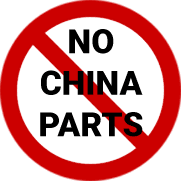When Would You Need to Remove an Aircraft’s Engine
Removing an aircraft's engine is not an easy feat. In fact, releasing a single engine on a Boeing 747 requires over 30,000 connections to be undone, and any mistake could lead to costly damages. When is it then appropriate or necessary to remove an aircraft's engine for replacement or repair? In this blog, we will highlight some of the circumstances in which it is required to remove this critical component.
The next situation in which an engine should be removed and assessed is a sudden engine stoppage. Sudden engine stoppage is specifically defined as an occurrence in which the aircraft's engine stops at under one RPM. These failures call for mandated removal and overhaul. While there may not be any visible damage to the engine, there is a high probability that the stoppage is or was caused by major internal damage.
Another event as concerning as a sudden engine stoppage is a sudden reduction in engine speed. This typically happens at a low speed when the propeller blades strike an object, such as a bird or other obstacle present on the runway. Such incidents can also lead to obscure engine damage, necessitating a complete removal and inspection.
A regular part of engine inspection that should never be overlooked is metal particle detection. Every modern aircraft engine should be built with an oil screen or magnetic chip detector that allows airplane operators to identify any metallic substances in the engine oil. If one discovers such substances, diligent work should be done to determine the source of the metal, as it is often indicative of partial internal engine failure. Particularly concerning metallic substances are magnetic iron-containing alloys such as steel. Such particles could potentially indicate that the cam is close to failure. However, metal is not always characteristic of a major problem, so the oil should be drained and refilled before a another inspection takes place.
Other tools which can be useful in determining the condition of an engine are spectrometric oil analysis programs and turbine engine condition monitors. Spectrometric oil analysis programs give the operator valuable insight into the different types of metals found in the engine's oil, as well as relative quantity. An increasing trend in any number of metals should prompt concern and signal that an engine removal and overhaul may be necessary. In addition, some turbine engines contain a monitoring program that tracks different metrics such as RPM, power output, vibration, and more. Following such parameters over time can alert operators to potential engine failures and allow them to preemptively diagnose and treat any problems.
Other signs of potential engine malfunctioning that should prompt thorough investigation include misfiring, low power output, and excessive vibration. By all means, one should refer to the engine's operation manual if they are unsure about a particular situation. Additionally, as engine removals and overhauls can be very costly, it is always advisable to consult a licensed aviation technician regarding the status of one's engine.
If you are in need of a trustworthy distributor of replacement engine parts or any other aviation components, ASAP Parts 360 has you covered. Owned and operated by ASAP Semiconductor, ASAP Parts 360 has direct access to an inventory of over 2 billion new, obsolete, and hard-to-find components for the civil and defense aviation industry. Additionally, as an AS9120B, ISO 9001:2015, and FAA AC 00-56B certified and accredited enterprise, we have several quality assurance measures in place to ensure that our customers receive the best products possible every time. Browse our expansive parts catalog at your leisure, and request a competitive quote at any time using our Instant RFQ service.


